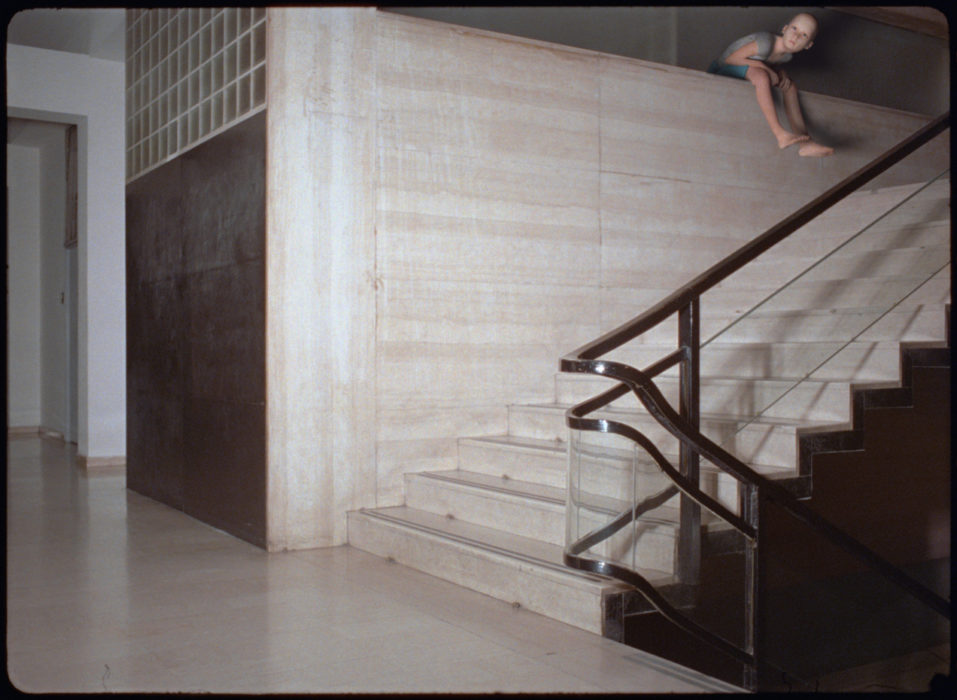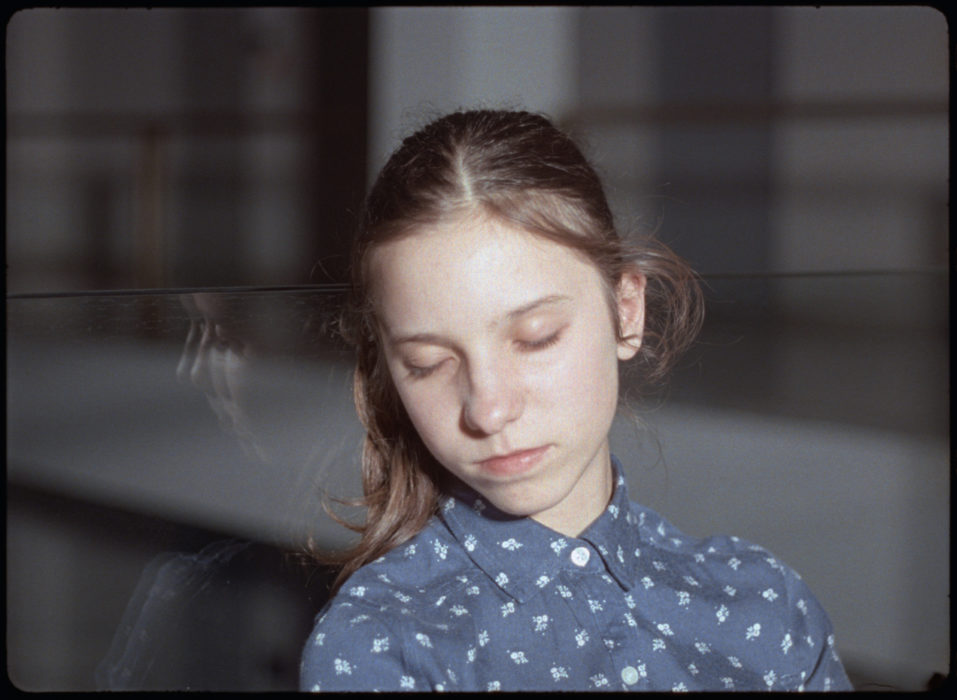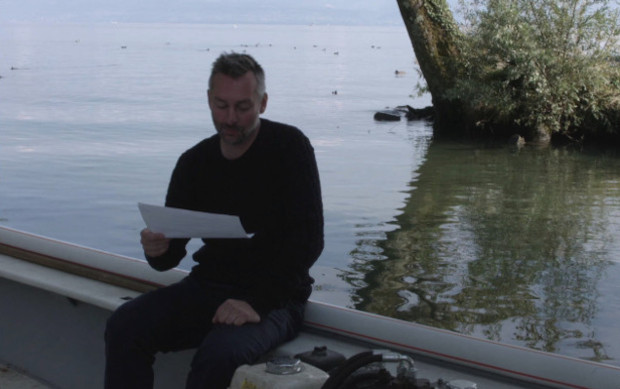Monelle
In Marcel Schwob’s short novel published in 1894, Monelle is a young prostitute who expresses herself in enigmatic aphorisms. She sells to children little lamps whose “flames wane, as if burdened by the dark rain”. They are perhaps Monelle’s sisters – later presented by Schwob in a series of sparkling tales of innocence and cruelty –whom Diego Marcon transposes to the darkness of the Casa del Fascio in Como, the former fascist showcase and masterpiece of Giuseppe Terragni’s rationalist architecture. Although Marcon makes no direct reference to The Book of Monelle other than in his title, he nonetheless follows its spirit and letter, which dictate for example that “each blackness be traversed by the wait for future whiteness”. The aphorism becomes the formal rule of a structuralist horror film with burlesque tones, filmed in 35mm using the old recycled equipment of an Italian animation studio, where the fleeting and perishable light of flashbulbs barely disturb the languid young girls, who then immediately return to the darkness where strange humanoids are lurking. We recognise these computer-generated creatures, who are watching, and keep us on our toes: they are both the disruptors and guardians of sleep. They belong to a dream, whose staggering simplicity condenses a multitude of imaginaries, temporal strata and latent realities. (Antoine Thirion)
In Between Art Film, Ermes-Ermes
Pierluigi Laffi
Federico Chiari
Diego Marcon
Diego Marcon






